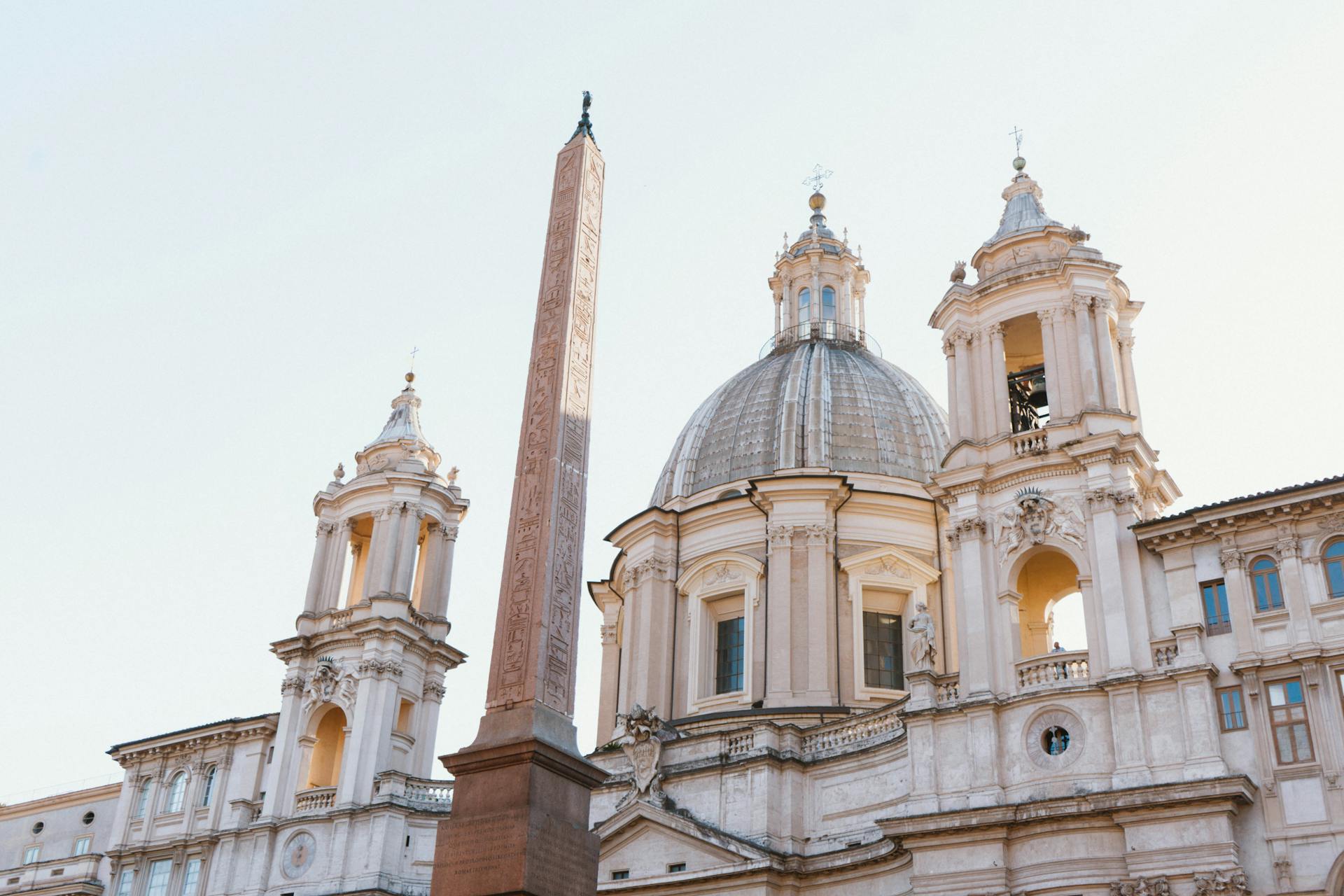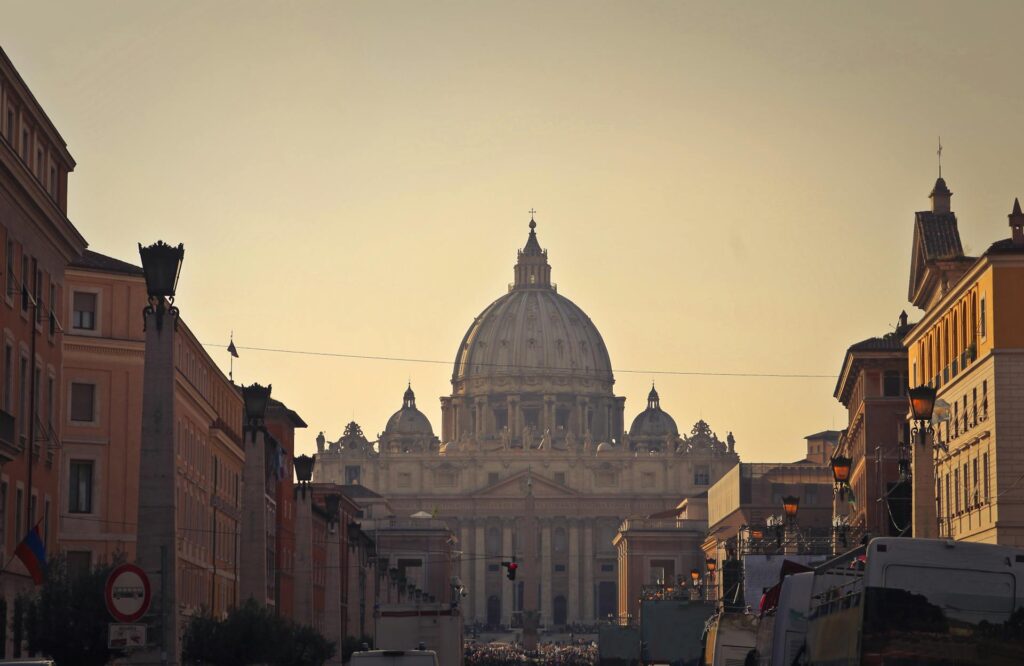In the heart of Italy lies the Eternal City, a place where time seems to stand still amidst a breathtaking fusion of past and present. Rome’s architecture is a living testament to its rich history and its enduring influence on global design. As you stroll through its cobblestone streets, you’re enveloped by a tapestry of ancient ruins, Renaissance palaces, and Baroque masterpieces, each structure narrating tales of emperors, artists, and architects who have shaped the city into a vibrant cultural mosaic. This seamless blend of old and new makes Rome a captivating destination for anyone intrigued by the power of architectural evolution.
The Timeless Allure of Roman Ruins
Rome architecture is synonymous with its ancient ruins, which continue to captivate both locals and tourists alike. One cannot walk through the city without encountering the remnants of its once-mighty empire. The Colosseum, an iconic symbol of ancient Rome, still stands proudly, showcasing the engineering prowess of its creators. Its arches and columns hint at the grandeur of past spectacles that once entertained thousands.
Yet, the Colosseum is merely the beginning. The Roman Forum, a sprawling complex of temples and government buildings, served as the epicenter of public life in ancient Rome. This remarkable site offers a glimpse into the administrative and social dynamics of the past, reminding us of how Rome’s architecture has laid the groundwork for modern urban planning.
Renaissance Revival: The Rebirth of Rome
The Renaissance period marked a significant transformation in Rome architecture, as the city emerged from the darkness of the Middle Ages into a new era of artistic and intellectual enlightenment. The architects of this time, inspired by the classical forms of ancient Rome, infused their works with a sense of harmony and proportion.
One of the most notable contributions from this period is St. Peter’s Basilica, an architectural masterpiece that embodies the grandeur of the Renaissance. Its magnificent dome, designed by Michelangelo, dominates the skyline of Vatican City, drawing visitors from around the world. For those interested in the intricacies of this architectural marvel, a deeper exploration of St. Peter’s Basilica architecture reveals its profound influence on ecclesiastical design.
Baroque Brilliance and the Theatrical City
As the Renaissance gave way to the Baroque period, Rome architecture took on a more dynamic and expressive form. Baroque architecture in Rome is characterized by its dramatic use of light and shadow, as well as its exuberant ornamentation, which aimed to evoke emotion and awe.
The Trevi Fountain, perhaps the most famous example of Baroque architecture in Rome, exemplifies this theatrical style. With its cascading waters and intricate sculptures, the fountain is a testament to the city’s ability to transform urban spaces into immersive works of art. This period’s architecture, much like the architecture of Paris, continues to influence modern design with its bold and expressive forms.
The Pantheon: A Testament to Architectural Innovation
Among the numerous marvels of Rome architecture, the Pantheon stands out as a symbol of architectural ingenuity. Originally constructed as a temple to all Roman gods, this ancient structure has been remarkably well-preserved, its dome remaining the largest unreinforced concrete dome in the world.
The Pantheon’s oculus, an opening at the dome’s apex, serves as a perfect illustration of the Romans’ understanding of light and space. As sunlight streams through the oculus, it creates a celestial effect that connects the earthly and divine, much like the ethereal beauty found in church building interior designs.
The Influence of Roman Columns and Arches
The architectural elements pioneered by the Romans, particularly columns and arches, have transcended time and geography. These elements are not only foundational to Rome architecture but have also been adopted and adapted across the globe.
The Roman arch, a key innovation, allowed for the construction of massive aqueducts and bridges, facilitating the growth of the empire. The legacy of these structural innovations can be seen in modern architecture, as discussed in the evolution of architectural styles from ancient to modern times.
Piazza Navona: A Baroque Masterpiece
Piazza Navona, one of Rome’s most famous squares, epitomizes the Baroque grandeur that defines much of Rome architecture. Once the site of an ancient stadium, the piazza now features elegant fountains and palaces that reflect the artistic fervor of the 17th century.
The centerpiece of Piazza Navona is the Fountain of the Four Rivers, designed by the illustrious sculptor Gian Lorenzo Bernini. This masterpiece not only showcases the Baroque style but also illustrates the enduring dialogue between architecture and nature, akin to the harmonious designs found in Zurich architecture.
The Legacy of Roman Engineering
Roman engineering feats are evident throughout the city, a testament to the innovative spirit that has defined Rome architecture for centuries. The city’s ancient roads and aqueducts laid the groundwork for modern infrastructure, demonstrating the Romans’ understanding of functionality and form.
These engineering marvels continue to inspire contemporary architects who seek to balance innovation with tradition. The principles of Roman engineering can be seen in many of today’s top 15 architectural wonders of the 21st century, which draw upon the past to forge a path forward.

The Vatican Museums: A Treasure Trove of Art and Architecture
The Vatican Museums offer a unique glimpse into the intersection of art and Rome architecture. Housing one of the most significant art collections in the world, the museums themselves are architectural gems that reflect the city’s rich cultural heritage.
Each room and corridor of the Vatican Museums tells a story, from the stunning frescoes of the Sistine Chapel to the intricate tapestries that adorn the walls. The experience of wandering through these halls is akin to exploring a living history book, where every corner reveals a new chapter in the saga of Rome.
Castel Sant’Angelo: From Mausoleum to Fortress
Castel Sant’Angelo is a fascinating example of the adaptability of Rome architecture. Originally constructed as a mausoleum for Emperor Hadrian, the building has been transformed over the centuries into a fortress and papal residence.
This evolution reflects the dynamic history of Rome itself, where buildings are repurposed to meet the needs of changing times. The adaptability of structures like Castel Sant’Angelo speaks to the innovative spirit that continues to drive the city’s architectural narrative.
The Influence of Roman Villas
Roman villas, with their emphasis on harmony with nature and luxurious design, offer insight into the domestic side of Rome architecture. These sprawling estates were not merely residences but were designed to be retreats where the elite could enjoy the beauty of their surroundings.
The principles of villa design, with their open courtyards and integration with the landscape, have influenced modern residential architecture, much like the serene designs found in the Sheikh Zayed Mosque design, which blends traditional elements with contemporary aesthetics.
The Colosseum: A Model for Modern Arenas
Beyond its historical significance, the Colosseum serves as a prototype for modern sports arenas. Its elliptical shape and tiered seating have inspired countless stadium designs, proving that ancient Rome architecture continues to inform contemporary engineering practices.
The Colosseum’s ability to accommodate large crowds with minimal congestion is a testament to the Romans’ understanding of crowd dynamics, a concept that remains relevant in the design of today’s public spaces.
The Eclectic Nature of Roman Neighborhoods
Rome architecture is not limited to grand monuments; it is also expressed in the city’s diverse neighborhoods, each with its distinct character. From the bohemian charm of Trastevere to the elegant streets of the Spanish Steps, Rome’s neighborhoods offer a rich tapestry of architectural styles.
This eclectic nature of Roman neighborhoods reflects the city’s ability to embrace change while maintaining a strong sense of identity. The vibrant mix of styles can be seen in other global cities, such as St. Petersburg architecture, where diverse influences create a unique urban landscape.
The Roman Domus: An Intimate Architectural Experience
The Roman domus, or townhouse, provides an intimate glimpse into the daily life of ancient Romans. These homes were designed with a focus on privacy and comfort, featuring atriums and peristyles that allowed for natural light and ventilation.
The design principles of the Roman domus continue to influence modern residential architecture, particularly in urban settings where space is at a premium. The emphasis on creating functional and aesthetically pleasing living spaces is a legacy that endures in contemporary design.
The Enduring Symbolism of the Roman Arch
The Roman arch, a defining feature of Rome architecture, is more than just a structural element; it is a symbol of the city’s enduring legacy. From the triumphal arches that celebrate military victories to the aqueducts that brought water to the city, the arch represents the ingenuity and resilience of Rome.
The influence of the Roman arch can be seen in architectural landmarks around the world, such as the stunning Las Lajas Sanctuary, which combines structural innovation with breathtaking beauty.
Conclusion
Rome architecture is a living testament to the city’s ability to adapt and thrive through the ages. From ancient ruins to modern innovations, the Eternal City continues to inspire architects and designers around the world. As we explore the architectural wonders of Rome, we are reminded of the timeless beauty and enduring influence of this remarkable city. Whether through the grandeur of the Colosseum, the elegance of Renaissance palaces, or the expressive forms of Baroque masterpieces, Rome’s architecture tells a story that is as relevant today as it was millennia ago. The city stands as a beacon of artistic and engineering excellence, a place where history and innovation converge to create a truly eternal legacy.

Recent Posts
15 Floor Plan Graphic Styles That Will Elevate Your Presentation Game
The Role of Shadows in Architectural Storytelling
When Furniture Becomes Architecture: Blurring the Line